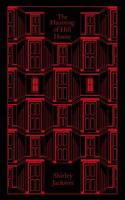Publisher's Synopsis
Amanece en Lisboa. En una mañana de mediados del siglo XX, la mirada del novelista se asoma a la ventana de un vecindario. Se anuncia un dìa no muy diferente de los demás: el zapatero Silvestre, que abre su taller; Adriana, que parte hacia el trabajo mientras en su casa tres mujeres inician otra jornada de costura; Justina, que tiene ante sì un largo dìa jalonado por las disputas con su brutal marido; la mantenida Lidia; y la española Carmen, sumida en nostalgias... Discretamente, la mirada del novelista va descendiendo y, de repente, deja de ser simple testigo para ver con los ojos de cada uno de los personajes. Capìtulo a capìtulo, salta de casa en casa, de personaje en personaje, abriéndonos un mundo gobernado por la necesidad, las grandes frustraciones, las pequeñas ilusiones, la nostalgia de tiempos que ni siquiera fueron mejores. Todo cubierto por el silencio tedioso de la dictadura, la música de Beethoven y una pregunta de Pessoa: &«¿Deberemos ser todos casados, fútiles, tributables?». Saramago termino´ de escribir Claraboya a los treinta y un años y entrego´ el manuscrito a una editorial de la que solo obtuvo respuesta cuarenta años más tarde, cuando era un escritor consagrado. La escritura minuciosa y paciente retrata con maestrìa una época marcada por la desesperanza. Claraboya anticipa de un modo deslumbrante los elementos del universo Saramago, asì´ como las virtudes que serán el germen de tantas obras maestras. En el texto se oye la voz de Jose´ Saramago, se reconocen sus personajes, se identifican la lucidez y la compasión que según la Academia Sueca distinguen su obra. ENGLISH DESCRIPTION Dawn breaks over Lisbon one mid-20th century morning. The novelist looks out the window in a neighborhood; there is nothing to indicate this day will be any different: Silvestre, the shoe-maker, opens the door to his workshop, Adriana leaves for work while in her home three woman begin another full day of sewing, Justina is looking at another long bout of fighting with her brutal husband; Lidia, the kept woman, and Carmen, the Spaniard, lost in nostalgic thoughts... Discreetly, the novelist's gaze travels downward. Suddenly, he stops being a humble witness to become each one of the neighborhood's characters. With each chapter he jumps from one house to the next, from one person to another, to reveal a world ruled by need, by great frustrations and small illusions, by a longing for a time that wasn't any better than this one. Everything is cloaked by the dreary silence of the dictatorship, Beethoven's symphonies, and a question from Pessoa: Should all of us be married, futile, and taxable? Saramago finished writing Claraboya when he was 31 years old. He delivered the manuscript to an editorial only to receive a response forty years later, once he was an already established and renowned author. The patient and highly-detailed writing masterfully portrays an era marked by despair. Claraboya anticipates the dazzling elements of Saramago's universe and the virtuous mind that will later give birth to a wealth of masterpieces. In these pages we hear José Saramago's voice, recognize his characters, and identify the clarity and compassion that, according to the Swedish Academy, distinguish his work.










